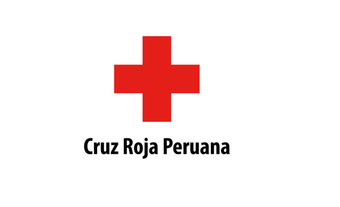Implementing the FbF Mechanism in Perú
Since 2015 the Peruvian Red Cross, the German Red Cross, and the Climate Centre have been working in close coordination with government entities to develop three EAPs. During that time, they have had two activations, one for snowfall and one for cold waves.
Project objective
The Project Seeks to reduce the humanitarian consequences of cold waves, snowfall, coastal flooding associated with El Niño, and flooding in the Amazon by taking actions that protect human and animal health through early warnings, ensuring access to safe water, and the distribution of cash or non-food items.
Key facts
Start/end date
May 2015 - December 2025
Hazards covered
Cold wave & Snowfall | Slow-onset Amazonian Floods | El Niño—Coastal Flooding (Under development
Regions covered
Cold wave & Snowfall: Cuzco, Puno, Arequipa, Moquegua,Tacna, Apurimac
Amazonian Floods: Loreto region
El Niño—Coastal Flooding (Under development Tumbes, Piura, Lambayeque, La Libertad, Ancash, Lima, Ica and Arequipa
Early action sectors
WaSH | Food Security & Nutrition | Health | Early Warning
Anticipatory Action Protocols/Plans in place
Cold waves & Snowfall
El Niño—Coastal Flooding
Slow-onset Amazonian Floods
Activations
Cold wave: 2016
Snowfall: June 2018
Population reached during activation
Cold wave: 625 families
El Niño: 1,000 families
Slow-onset Amazonian Floods: 1,000 Families
Key actors/implementing partners
The Peruvian Red Cross, with support from the German Red Cross, the Red Cross Red Crescent Climate Centre, and the 510 initiative of the Netherlands Red Cross worked closely with the National Centre for Disaster Risk Estimation, Prevention and Reduction (CENEPRED), National and Regional Emergency Operations Centers (COEN and COER), the Civil Defense Institute (INDECI), the National Water Authority (ANA), the Regional Health Directorate (DIRESA), the Regional Health Management (GERESA), the Regional Agricultural Directorate (DRA), the Provincial Agrarian Agency, and Provincial and District Municipalities. The triggers were developed with support from SENAMHI (the National Meteorological and Hydrological Service) and ENFEN (Estudio Nacional del Fenómeno El Niño).
Anticipation in practice: Project description
Peru is a climatically diverse country and is therefore exposed to wide-ranging hazards. The three protocols developed under this project address hazards specific to different climatic zones. The Cold Wave and Snowfall Protocol covers regions of the high Andes mountains (at or above 3600 meters above sea level). In these areas, prolonged cold spells or heavy snowfall can weaken alpacas—the primary livelihood for local herders—and deprive them of food, as well as contributing to life-threatening respiratory illnesses and pneumonia among people. The cold wave and snowfall EAP, which was approved in 2018, attempts to mitigate these impacts for up to 625 families with the following actions:
- Providing communities in the region with early warning and health advice via the radio and community meetings
- Providing veterinary kits to help alpacas stay strong in the cold
- Providing cold-weather gear to protect herders from the elements
- Providing warm clothing for vulnerable family members and a waterproof tarpaulin to improve housing insulation
The snowfall protocol is activated when a 5-day forecast indicates 60-80% probability of snowfall and SENAMHI issues a special alert. For cold waves, activation is triggered when models forecast four consecutive days of extremely low temperatures.
The Amazon Flood Protocol can assist 1,000 families seven days before a flood. In this area, flood waters limit access to clean water and increase exposure to waterborne diseases, destroy infrastructure and isolate communities, and disrupt agriculture and fishing activities on which families depend. The Flood EAP mitigates these impacts through the following actions:
- Distribution of cash grants to cover a month of food to 400 families
- Provision of water filters to 600 families
- Delivery of hygiene promotion programs
Unlike many other protocols, the Flood EAP has a lead-time of 45 days. The first activation occurs when GloFAS sub-seasonal forecasts indicate a 75 percent change of an event exceeding the 80th percentile. If the forecast changes within 30 days of the first trigger, activities stop. The second phase of activation begins when a GloFAS 10-day ensemble forecast indicates a 60 percent chance of a flood that exceeds levels that correspond to a 10-year return period.
In Peru, El Niño is strongly correlated with intense rainfall, which damages infrastructure, cuts off access to communities, destroys crops and homes, and results in injuries and fatalities. The El Niño protocol attempts to assist affected populations by doing the following:
- Distributing cash grants to help families meet their basic needs.
- Installing clean water distribution systems before the flood
- Providing families with water filters to ensure access to safe water
The El Niño protocol is triggered in three phases. Initial preparations begin when ENFEN forecasts a 50 percent change of a strong or extraordinary El Niño and seasonal forecast probability greater than 70% of exceeding the rainfall threshold (95th percentile) along areas of the Peruvian coast. If the seasonal forecast does not lead to activation, the EAP will activate when monthly forecasts indicate a probability greater than 70% of exceeding the rainfall threshold (95th percentile). Finally, the EAP will activate when short-term forecasts reach a level-4 warning, which corresponds to accumulated rainfall above the 99th percentile (very extreme), with a probability >60%.
Contact
E-mail: coordinador.grd@cruzroja.org





